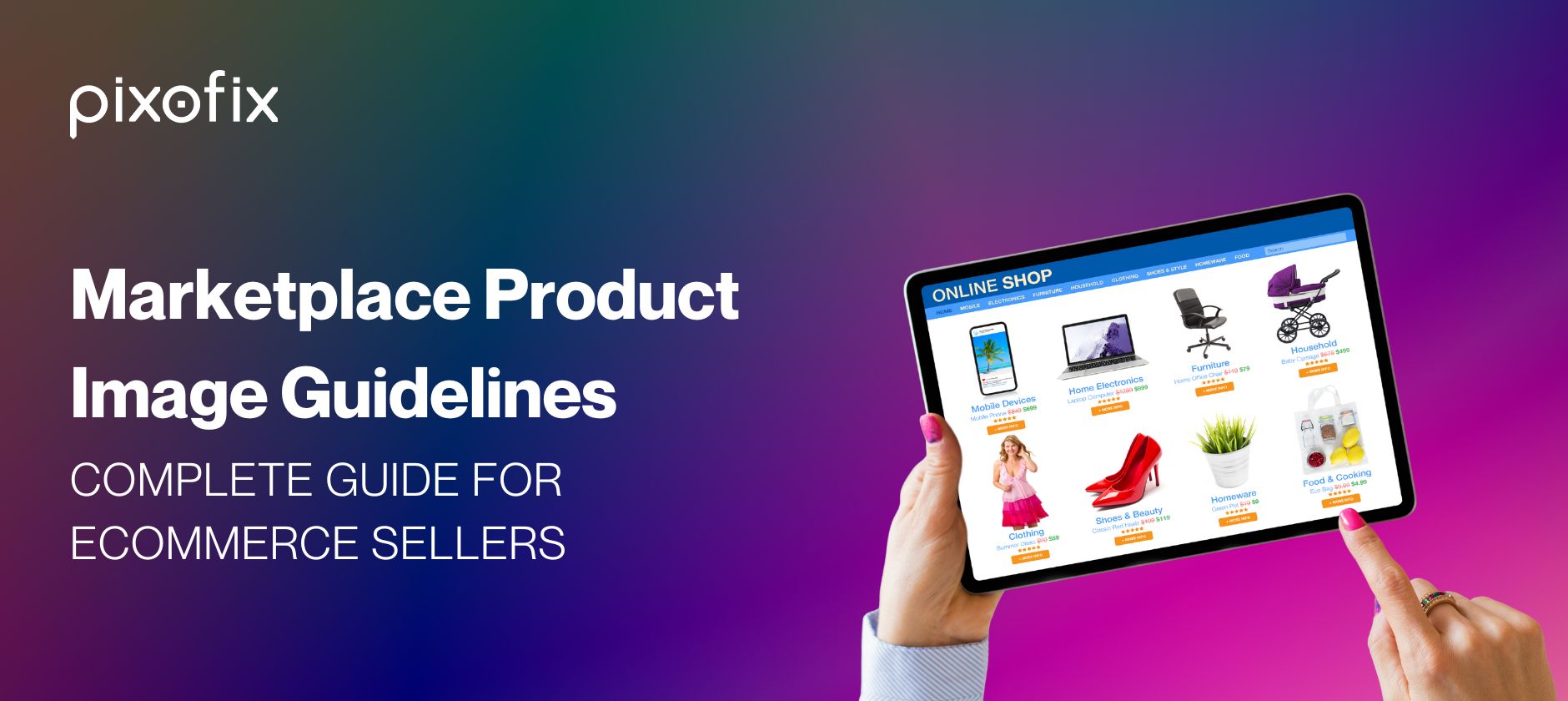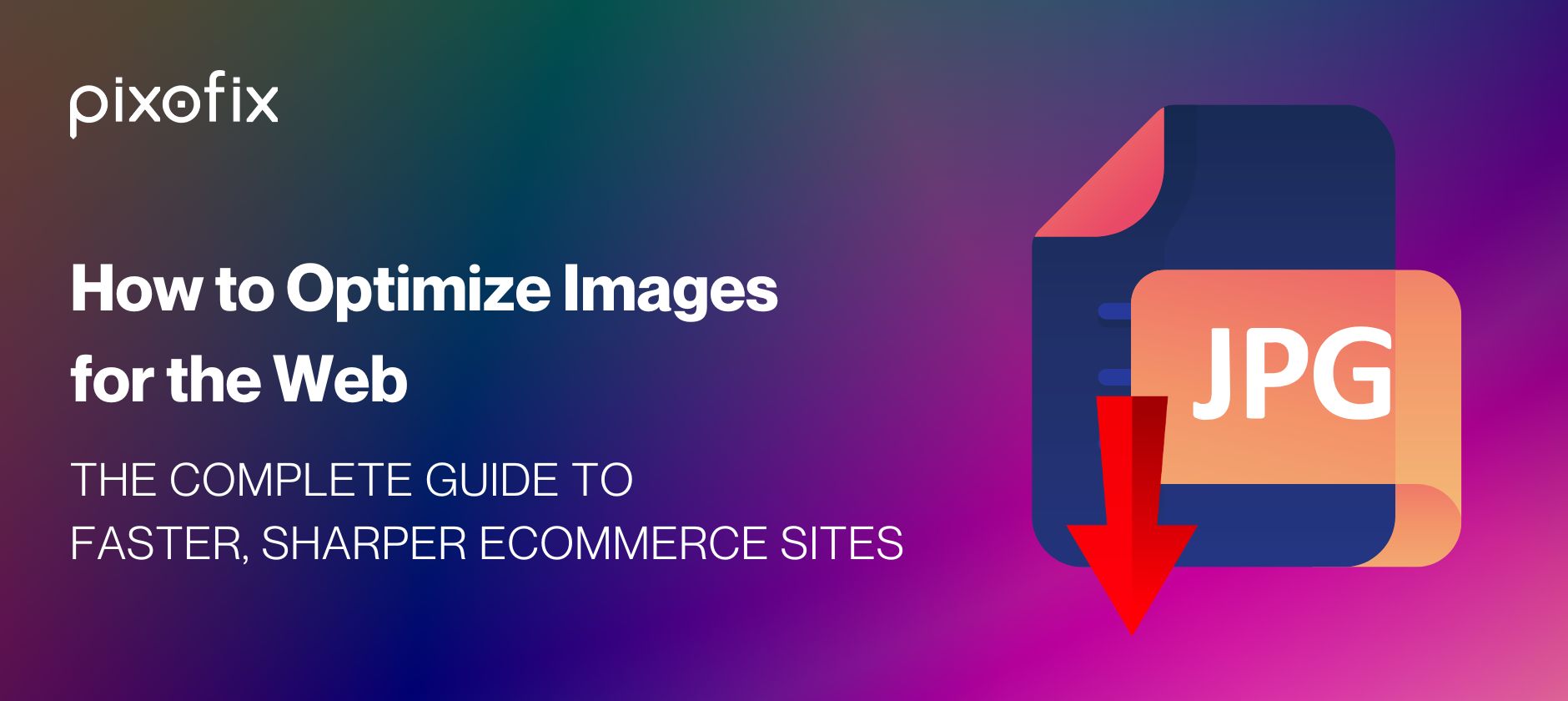Importance of Marketplace Product Image Guidelines
Boosting Sales with Quality Images
Before a shopper reads your description or scans your bullet points, they judge your product by the image. High-quality visuals aren’t just eye candy, they’re decision drivers. Whether you're selling sneakers or ceramics, sharp, well-lit images cut through hesitation. A 3% boost in click-through rate might not sound like much, but when scaled across a product catalog, it can mean thousands in revenue.
Great photography pulls the viewer into the product experience. It answers silent questions: How big is it? How does it feel? Will it match my style? Every answer told visually reduces friction, shortens the path to purchase, and leaves room for emotional connection.
Building Trust and Brand Identity
Consistency in your product visuals doesn't just build trust, it builds a brand people remember. Unified lighting, similar backgrounds, and retouching that feels real — that's how shoppers recognize your storefront in a sea of sameness.
Clear, authentic imagery tells buyers you care. That you’re legitimate. That what they see is what they’ll get. It’s not window dressing. It’s the window into your product quality and customer experience. When brands work with creative teams like Pixofix, they’re not outsourcing editing — they’re investing in visual fidelity that reinforces every other part of their ecommerce funnel.
Core Concepts of Product Image Guidelines
Basic Image Requirements Across Platforms
Most marketplaces agree on the bare minimum: high-resolution JPEGs or PNGs, sRGB color profiles, no borders or watermarks, and files under a certain size limit (usually 10MB). But those are table stakes. Where brands fall short is treating this checklist like a finish line instead of a baseline.
Edges should be crisp. Products should be centered. Unnecessary props? Leave them out. Each platform has nuances — but first, nail the technical hygiene. Without it, even your best content gets rejected.
The Role of Image Quality in Ecommerce
Pixel noise, motion blur, off-tones — these are silent conversion killers. Bad lighting tells the brain “cheap.” Over-saturating color signals unpredictability. The cleaner the image, the faster the shopper’s mind says, “Yes. That’s the one.”
Top performing brands obsess over sharpness, true-to-life color, and depth. It’s why they shoot in RAW. Why they correct every shadow. Why their post-production partners, like Pixofix, balance clarity with realism. Great retouching isn’t about perfection. It’s about evoking the feeling of holding the product in your hands.
Consistency in Image Style and Presentation
Every platform swipe is a brand reveal. Are your thumbnails consistent in brightness? Do your hero images share the same angle and margin space? Disjointed visuals break the story. Unified presentation binds the shopper to your aesthetic.
Create visual standards: specific lighting schemes, crop ratios, even the angle of a model’s arm. Then build it into your pipeline. Automation helps, but human touch ensures brand character stays intact. This is where partners like Pixofix shine — they don’t just balance levels, they balance style with speed at scale.
Marketplace-Specific Image Standards
Amazon Image Guidelines
Amazon’s rules are rigid: white backgrounds (RGB 255,255,255) for main images, no text or logos, products filling at least 85% of the frame, and a minimum of 1000 pixels on the longest side for zoom.
But the real skill is stretching within the rules. Use the secondary image slots to show lifestyle, scale, detail, and packaging. Build visual intent — not just compliance. Amazon buyers move fast. Your images need to load fast, look clean, and answer “why this one?” in half a second.
eBay Image Requirements
eBay is looser but no less strategic. They’ll accept colored or textured backgrounds, as long as the product remains clear and central. Their emphasis? Quantity. Sellers get up to 12 image slots. Use them.
Wide shot. Detail. Function. Underside. Real-world use. Don’t waste the opportunity with slight angle variations. Each image should move the shopper toward certainty. Think like a buyer skimming fast with a mobile thumb.
Shopify Image Protocols
With Shopify, your store is your brand. There’s no visual framework imposed — which can be liberating or risky. Without guardrails, your product photography defines your storefront’s UX.
Use uniform image dimensions for a clean grid layout. Stick to consistent lighting and crop styles. And since Shopify lets you scale image richness, go for it. Full-width lifestyle banners. Hover-to-zoom effects. AI-powered galleries. The key? Visual coherence across SKUs. Many Shopify sellers partner with Pixofix to define reusable templates that fuse artistry with ecommerce logic.
Walmart Marketplace Image Standards
Walmart requires crisp primary images on white, closely mirroring Amazon’s specs, but also recommends alternate images showcasing benefits, use cases, and scale. They favor realism — so over-processed photos or fake shadows are flagged fast.
Walmart’s demographic leans comparison-driven. If two listings feel visually similar but one feels more polished or informative, it wins. Detail contrast, correct exposure, and subtle retouching make all the difference.
Etsy and Niche Marketplace Guidelines
Etsy prioritizes authenticity. It’s the anti-mass-retail marketplace, and your product images have to reflect that. Environmental shots. Real humans. Subtle imperfections. Even background textures that feel homemade.
Here, it’s not about sterility, it’s about mood. About storytelling. You’re not selling candle holders — you’re selling the Sunday morning someone wants to live inside. Editing teams can help with retouching, yes, but only the ones who understand brand texture. That’s why brands lean on partners like Pixofix — for a blend of polish and rawness that remains true to indie.
Practical Framework for Image Creation
Step-by-Step Workflow for Ecommerce Product Images
Pre-Production Planning
Everything starts with clarity. What’s the purpose of each image set? What mood are you aiming for? Sketch out shot lists. Lock in angles. Choose props that enhance but never distract. And nail down your lighting setup. Pre-production avoids costly post-production corrections.
Photography Techniques for Best Results
Shoot tethered when possible. Use controlled, diffused lighting to avoid harsh shadows. Lock your camera settings to ensure every frame is consistent. If you're capturing lifestyle shots, let emotion lead — a natural hand placement or small smile can elevate the scene.
Go wide with aperture for portraits, tight and sharp for product close-ups. Bracket exposures if needed. And always review in real time. The fewer surprises later, the better.
Post-Production and Editing Essentials
Retouching isn’t about making things flawless. It’s about letting them breathe. Dust removal, edge refinement, color balance — those are mandatory. But beyond that, think brand. Is your palette warm? Cool? Does your image feel inviting or premium?
AI tools like Lightroom masks or automated refinements can speed things up, but the magic still lives in subtle hands. That’s why hybrid teams — creatives plus tools — are the future. Pixofix acts as an extension of your studio, balancing automation with hand-tuned polish. Always fast. Always brand-aligned.
Utilizing Backgrounds and Textures
Importance of White and Neutral Backgrounds
White backgrounds aren’t exciting, but they’re essential. They isolate the product. Make it pop. Give marketplaces exactly what they want. But neutrality doesn’t mean bland. The right shadows. The correct contrast. That's what keeps white images from looking flat or sterile.
Whether you build sets or use digital cutouts, consistency is your best friend. One shade or tone off, and your pages start to look patched together. Most teams rely on clean templates — or partner with visual editors like Pixofix who can process at scale without sacrificing clarity.
Effective Use of Textures in Lifestyle Shots
Lifestyle doesn’t mean random clutter. Every texture should align with your product’s tone. Denim for rugged gear. Worn wood for artisanal goods. Marble for upscale elegance. Textures add realism, yes, but also invite the shopper into the setting.
The trick is subtlety. Let textures frame the product, not fight for attention. Teams often capture texture plates separately, then use editing to composite them with precision. Done well, the backdrop becomes atmosphere. Not noise.## Enhancing Product Images with Additional Visuals
Incorporating Lifestyle Images
Lifestyle images make products real. A blanket’s texture means more when it’s draped over a reading chair. A jacket sells quicker when someone’s wearing it, mid-step, in the season it was made for. These photos create emotional access points. They help people imagine ownership.
But “lifestyle” doesn’t mean cluttered or off-brand. Every frame needs purpose. Keep props minimal but meaningful. Match lighting to your core image set. Style choices — from wardrobe to setting — should echo your brand’s tone. And always ask: does this feel honest to the product?
This is where working with production-minded retouchers like Pixofix pays off. They balance environmental realism with visual clarity — separating the product from the scene without disrupting the story.
Benefits of Infographics and Detail Shots
Some buying hesitation comes from confusion. Infographics clear it instantly. Show size references, call out key features, add usage steps. But don’t overload — one visual, one message.
Detail shots solve another blocker: “How does it actually look up close?” Zoomed-in images of buttons, textures, stitching, or hinge mechanisms remove doubt. They say: here’s how much we care.
Often, brands shoot extra angles and crop later. Efficiency counts. But execution does too. Editing detail shots takes finesse — lighting, sharpness, retouching. Pixofix teams work with deep zooms all the time, using hybrid AI-human workflows to keep accuracy tight and deadlines tighter.
When to Use Contextual Images
Context is clarity. A water bottle on a desk communicates size. A sofa next to a human frame tells scale and function better than specs ever could. Contextual shots aren’t glamorous, but they’re crucial — especially for quirky or new-to-market products.
It’s not just about showing the “where.” It’s about solving shopper questions visually. “How big is this?” “How do you wear it?” “Where does it go?” Use these images sparingly, but strategically. And keep edits light — context should feel observational, not staged.
Optimizing Images for SEO and User Engagement
Image File Names and Alt Text Best Practices
Search engines don’t see visuals — they read signals. Every product image’s filename and alt text is a chance to be found.
Use descriptive, keyword-loading file names: red-knit-wool-scarf.jpg beats IMG_0029.jpg every time. Keep it clean and relevant. No stuffing.
Alt text is even more critical. It powers accessibility and SEO together. Focus on what’s in the image, not what you hope to rank for. “Close-up of leather wallet with secure zipper pocket” helps both screen readers and search crawlers.
If you’ve created image sets in bulk or have legacy files, tools like Pixofix’s integrated workflows can help you auto-generate, review, and QA metadata at scale — a win for ecommerce ops teams managing hundreds of SKUs.
Mobile Optimization Tips
Mobile traffic isn’t “growing” — it already dominates. If your product images fumble on phones, you’re bleeding sales.
Square or 4:5 ratios perform best across most marketplaces. Vertical crops fill screens better on mobile, especially in carousel swipes.
Compress wisely. Use WebP or next-gen formats where supported. Tiny size, sharp image. Always test mobile load speed. Those extra two seconds? They’re killer.
And don’t forget tap-to-zoom. That feature only matters if your resolution’s high and your detail shots are sharp. Invest in scaling — high-res originals retouched cleanly, compressed smartly, and re-sized for each screen.
Common Mistakes to Avoid
Oversized or Poorly Composed Images
Big files slow sites down. Small compositions lose buyer interest. Oversized images with no framing logic create visual fatigue — especially on mobile. Compositions should guide the eye right to the product and what makes it valuable.
Avoid weird crops, too much negative space, or distracting props. Check grid alignment and margin consistency. The best product frame feels invisible — it just works.
Retouching can fix clutter, but not poor planning. That’s why brands work with partners like Pixofix in pre- and post-production — to get framing right from shoot to shelf.
Ignoring Marketplace-Specific Requirements
Every platform has quirks. Amazon demands white backgrounds. Etsy rewards story-rich visuals. Walmart rejects fake shadows. Mess this up and your listing sits unpublished, or worse, gets delisted mid-cycle.
One image set won’t work across the board. Use templates tailored by channel. And use professionals who know the rules. Pixofix integrates marketplace specs into every delivery by default — cutting rejection rates and edit requests before they start.
Failing to Optimize Images for Speed
Speed sells. If your gallery hangs, your cart empties. High-res images are non-negotiable, but they have to be lean. Lazy compression wrecks clarity. Lazy hosting wrecks speed.
Use CDN delivery. Cache images when possible. Resize dynamically per device. Keep file formats modern. And if you process dozens of assets a day, automate the image compression pipeline.
Many ecommerce ops teams patch together slow tools. Smart ones plug in partners like Pixofix who optimize for clarity and performance — not one at the cost of the other.
Metrics to Measure Image Performance
Key Performance Indicators for Product Images
You can’t fix what you don’t measure. Every product image set should tie back to key KPIs:
- Click-through rate (CTR) from category or search pages
- Conversion rate from product detail views
- Time-on-page for image-heavy listings
- Zoom engagement or carousel scroll depth (if your platform supports it)
Track at the variant or angle level. Sometimes, it’s a single thumbnail killing your flow. And test changes deliberately. Swap one hero visual and measure lift. Visuals are too powerful to guess at.
Tracking Conversion Rates and Bounce Rates
Conversion rate is the ultimate verdict on your images. If people land, browse, but don’t click “buy,” something’s off — and it’s probably the visuals.
Bounce rate tracks drop-off. Strong images pull users deeper. Weak ones repel fast.
Use A/B testing when you can. Great teams test multiple image sets before they roll out commits site-wide. And insights should loop back to creative — when edits get guided by performance data, not opinion, results go up fast.
Pixofix often works side-by-side with marketers during these test cycles, creating multiple optimized variations quickly for side-by-side analysis. It’s not just editing. It’s content strategy with a mouse and mask.
Best Practices for Image Editing
Choosing Professional Retouching Services
Editing is where images come alive — or fall apart. Bad retouching looks fake. Great retouching feels invisible. Look for teams that center realism, not stylized perfection.
The best editors are collaborators. They understand ecommerce. They ask about brand tone, audience, and platform standards before even opening the file.
That’s how partners like Pixofix stand out. They’re not just cutting paths or removing dust. They’re aligning every pixel with your visual identity — and plugging seamlessly into creative workflows.
Cost-Effective Retouching Solutions
You don't need massive budgets to get clean, compelling edits. But you do need systems. Batch-processing your seasonal catalog? Use hybrid teams that combine AI speed with human oversight.
Tools like Lightroom and Photoshop are table stakes, but strategy matters more: what gets hand-edited vs algorithmically filtered? Who’s QCing the output? What’s the turnaround?
Pixofix has mastered this balance — they’ve built AI into their pipeline, but never replaced human review. This is how they hit speed, scale, and style all at once.
Creating a Checklist for Image Quality
A checklist keeps your standards enforceable. Every asset should pass these checks before publishing:
- Is the product properly lit and color-accurate?
- Are edges sharp and clean?
- Is the background consistent and on-brand?
- Do image sizes fit marketplace specs?
- Have all touchpoints (file name, alt text, compression) been optimized?
Run QC before deployment. Every failed image costs trust. Consider building these checks directly into your editing partner’s pipeline. At Pixofix, quality control is standard — all assets pass human review, cross-platform testing, and custom checklist validation before delivery.
That’s how you stay consistent. And how images, over time, drive a brand forward — not just fill a slot.## Before-and-After Comparisons
Case Studies of Image Quality Improvements
A grainy, dim photo tells a very different story than the same product lit correctly and properly retouched. The transformation isn’t just visual — it’s commercial.
Take a home goods brand selling ceramic mugs. The original image was dull, with beige lighting and a busy background. After retouching: crisp whites, true color, and shallow depth of field that pulled the mug into focus. CTR jumped by 18%. Same product. Different perception.
Another example: a fashion retailer submitted studio images with shadow artifacts and uneven skin tones. Post-editing with Pixofix, skin tones matched across rows of thumbnails. Textures of the garments looked tangible. Bounce rates dropped on those product pages by 22%. That’s the power of subtle, intelligent retouching over heavy-handed filtering.
Visual Impact of Professional Editing
Clean lines. Seamless backgrounds. Balanced tone. Professional editing doesn’t just polish — it directs attention. A sloppy edge crop or off-white tone tells the shopper your brand doesn't sweat the details. And if you missed the details in an image, what about the product?
Professional teams like Pixofix don’t just clean up images. They enhance the story. They unify contrast and tone across galleries. They ensure every frame feels like part of the same brand moment, not a mishmash grabbed from different shoots.
This kind of editing uses a hybrid model: fast AI-assisted processing for volume, then human hands for nuance. The result? Product pages that breathe clarity, cohesion, and quality. Exactly what turns a passive view into a purchase.






.png)

.png)
